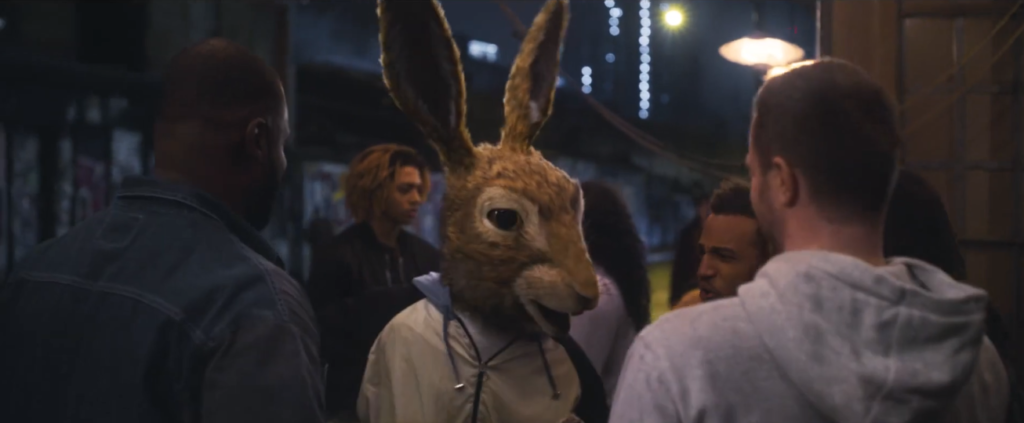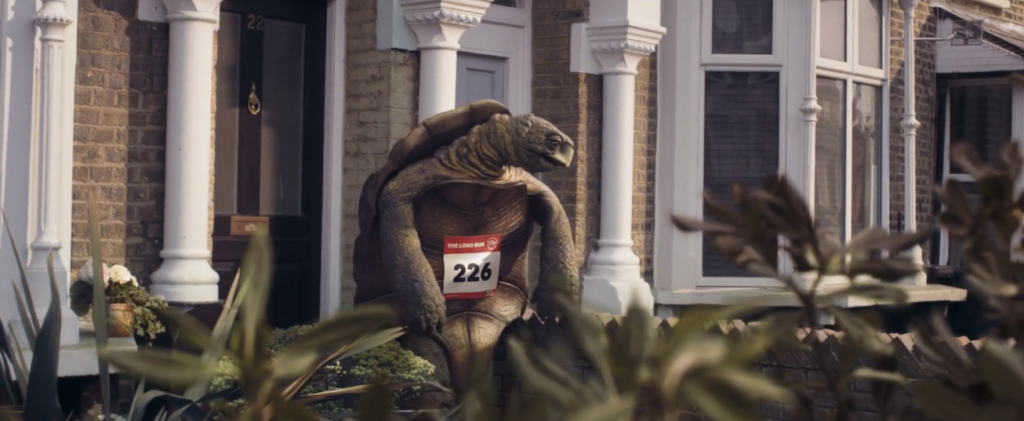“Be extremely subtle, even to the point of formlessness. Be extremely mysterious, even to the point of soundlessness. Thereby you can be the director of the opponent’s fate”
– Sun Tzu
What does being Subtle Mean?
By definition, subtle means being difficult to understand or perceive, it characterizes being clever in a certain approach in order to achieve something. In the context of marketing it creates intrigue and mystery around any given activation when utilized effectively, moreover it implies that the brand trusts the intellect of its target audience to interpret its subliminal messaging.
The Ambiguity Factor – A Risk Worth Taking?
The use of ambiguity invites interest – leaving crevasses open for interpretation allowing the audience to fill them with their own sensibility. The use of this concept in marketing can establish links between the campaign itself, and the audience’s own relatability. It is argued that it may be counter-intuitive when implemented, as the overall intended message may get lost, however if executed correctly it can spark discussion that reinforces the question – ‘How did you interpret that?’.
The synchronisation of both ambiguity and subtly is demonstrated perfectly in the IKEA TV campaign – ‘The Hare’.
IKEA Campaign Origin | ‘The Hare’
Sleep is important, we can agree that it’s a necessity for your overall health and well-being. Unfortunately certain factors get in the way of this necessity, factors relating to stress and anxiety are the usual culprits. With the added strain that the Covid-19 pandemic has introduced to us as a society, aspects associated with stress and anxiety are increased even more.

Campaign Overview | ‘The Hare’
In September IKEA launched a campaign raising awareness around sleep with the message “Tomorrow Starts Tonight”. The TV advert is based around the old fable of the ‘The Tortoise and the Hare’, told as a prequel with a contemporary twist.
The Big Idea
Using two contrasting narratives, IKEA demonstrate the importance and value of a good night’s rest.
- Instead of getting an early night before the big race, the hare stays out late with friends and continues to play video games and take selfies when he gets home.
- The advert then transitions to the next morning and to the tortoise who in contrast, has just woken up after being well rested from the night before.
The tortoise, unlike the hare who is still asleep on the couch, is ready to tackle the day and makes her way outside in running gear, all set for the big race.
Telling the Story
IKEA’s aim for this campaign was to position its bedroom furniture and bedding as the vehicle for achieving optimal rest. In the ad, the bedding sheets used by the tortoise for the ‘perfect’ night’s sleep are displayed using a graphic showing the product name and price, the seamless nature of the integration of the product within the world presented doesn’t make the ad itself seem disingenuous or take away from the narrative. The centrepiece of the campaign was a creative TV spot designed to strike emotion within the audience.

What makes this Campaign Stand Out?
Relatability – We all at some point in our lives have stayed out later than we should have or seen the bus you’re supposed to be on pull away, these nuances that are included in the story are immediately recognizable and appeal to a wider audience.
The ad then positions the tortoise as the desirable target for people to get to bed at a reasonable time and get up early to seize the day.
The relatability factor is highly impactful in connecting with your audience on a personal level, and in doing so creates an authenticity to your campaign. It is a tool that is consistently used by content creators and influencers to bring their followers closer to them and provide a sense of community which facilitates the product or brand placement in an indirect fashion.
The fact that the hare has flaw’s makes the ad more authentic therefore furthering the relatability. The viewer is immediately left with thoughts such as “That’s me!”
Nostalgia – The story of the tortoise and the hare is one that most children are told either in the early years of school or by their parents. The old fable is universally recognisable as adults, transporting us back to the moment when we first heard it as children.

The implementation of nostalgia in marketing creates positive memories in the viewer, and establishes an emotional link which then reflects back onto the brand itself and the products that they are promoting, in this case bedroom furniture. As the positive perception of the product or brand is established, there is an increased probability that the consumer will ultimately engage and convert.
This positive reinforcement is successfully used by brands such as Guinness and Coca Cola with their Christmas campaigns or Budweiser re-releasing their iconic “Whassup” ad spot looking through the lens of Covid-19.
Subtle Nuances & Ambiguity – Subtlety adds substance to this campaign, and or any campaign, facilitating deeper meaning where necessary.
In the case of ‘The Hare’ advert – the fact that Covid-19 is not explicitly referred to but was the underlying reasoning that sparked the ideology behind the campaign adds layers of interpretation.
As an audience during the pandemic, we are almost accustomed to brands marketing products and services with Covid-19 front and centre throughout, furthermore, this approach has become saturated.
The ambiguity of the piece provides the viewer with the opportunity to make their own interpretation in a friendly, familiar and easily digestible manner, rather than feeling forced.
IKEA also rolled out a creative Out-Of-Home campaign that identifies the need and emphasises that their product and brand provide the answer in a completely subliminal fashion. In essence, the creative indicates to the audience that sleep is the solution to a better, healthier life and that IKEA’s bedding products are the vessel that will help you achieve that.

The campaign also stretched to social media whereby content was promoted relating to sleep (e.g. sleep experts discussing the benefits of sleep).
We believe a great night’s sleep is the unsung hero of a great day to come. Telling the untold prequel to a well known fable, we show how you can turn your bedroom into a sleep sanctuary and turn tomorrow into an instant success. After all, Tomorrow Starts Tonight. pic.twitter.com/P52SskihqJ
— IKEA IRELAND (@IKEAIE) September 4, 2020
Key Points
What can be learned from this if you are a brand?
Never underestimate your target audience – your audience is smarter than you think, leaving your messaging and imagery open for interpretation instead of it being spoon fed places a degree of trust in the consumers’ understanding, which increases their own sense of value. The ability to spark conversation within your audience creates a dynamic whereby your audience promote and advocate for your brand through their own interactions.
However, it is important to note, that this is a risk, which a huge return on the upside. So if you’re going to do it, do it right!
Utilization of emotion is integral – It’s no secret that brands are seeking to trigger emotion when within campaigns. Its importance cannot be understated and must not be overlooked, or even lost in the creative process but it should be the cornerstone to any great campaign. When used effectively it can establish a connection constructed with positive emotion which will illuminate your brand in the consumers’ mind.
Authenticity & social responsibility – your audience is inundated with a constant flow of content and information on a daily basis, which has given rise to saturation. This saturation has made audiences better at distinguishing what’s authentic and what is not. In a time where social responsibility is at an all-time high, brands are now expected to be more ethical and have certain moral values. The ability to recognize certain trends (wellness & environmental) as being important when considering how to approach a campaign is useful. However, as a brand, you must convey genuine intent in caring for these trends and not just taking them at face value as to avoid ‘woke’ culture.
Conclusion:
Remember, subtlety adds substance, it can create a feeling of appreciation for the creativity and effort put into your campaign. In an age where content is the new currency, the inclusion of finer detail that catches attention and forces the viewer to contemplate can really make your campaign stand out in a crowd.
In our opinion the most powerful message conveyed by the campaign is not in what was said or featured but rather in what was not said. We are all aware of the outcome of the Tortoise vs. The Hare, so there is no need for IKEA to show the race itself. In doing so, IKEA have left us knowing that the fast-paced lifestyle of the Hare (which ironically, we all identify with) is unsustainable whereas the Tortoise’s decisions and actions lead to winning.


